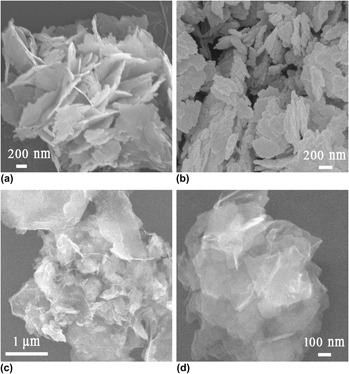Crossref Citations
This article has been cited by the following publications. This list is generated based on data provided by
Crossref.
Liu, Zhaomeng
Peng, Wenjie
Fan, Yulei
Li, Xinhai
Wang, Zhixing
Guo, Huajun
and
Wang, Jiexi
2015.
A new route for graphene wrapping LiVPO4F/C nano composite toward superior lithium storage property.
Journal of Alloys and Compounds,
Vol. 639,
Issue. ,
p.
496.
Wu, Songping
Xu, Rui
Lu, Mingjia
Ge, Rongyun
Iocozzia, James
Han, Cuiping
Jiang, Beibei
and
Lin, Zhiqun
2015.
Graphene‐Containing Nanomaterials for Lithium‐Ion Batteries.
Advanced Energy Materials,
Vol. 5,
Issue. 21,
Liu, Zhaomeng
Peng, Wenjie
Fan, Yulei
Li, Xinhai
Wang, Zhixing
Guo, Huajun
and
Wang, Jiexi
2015.
One-step facile synthesis of graphene-decorated LiVPO4F/C nanocomposite as cathode for high-performance lithium ion battery.
Ceramics International,
Vol. 41,
Issue. 7,
p.
9188.
Yang, Yingkui
Han, Cuiping
Jiang, Beibei
Iocozzia, James
He, Chengen
Shi, Dean
Jiang, Tao
and
Lin, Zhiqun
2016.
Graphene-based materials with tailored nanostructures for energy conversion and storage.
Materials Science and Engineering: R: Reports,
Vol. 102,
Issue. ,
p.
1.
Fu, Xiaoning
Chang, Kun
Li, Bao
Tang, Hongwei
Shangguan, Enbo
and
Chang, Zhaorong
2017.
Low-temperature synthesis of LiMnPO 4 /RGO cathode material with excellent voltage platform and cycle performance.
Electrochimica Acta,
Vol. 225,
Issue. ,
p.
272.
Xiong, Junwei
Wang, Yuanzhong
Wang, Yingying
Li, Zhaoqiang
and
Zhang, Jianxin
2017.
Three-dimensional (3D) LiMn0.8Fe0.2PO4 nanoflowers assembled from interconnected nanoflakes as cathode materials for lithium ion batteries.
Ceramics International,
Vol. 43,
Issue. 3,
p.
3190.
Mauger, Alain
and
Julien, Christian
2018.
Olivine Positive Electrodes for Li-Ion Batteries: Status and Perspectives.
Batteries,
Vol. 4,
Issue. 3,
p.
39.
Kwon, Nam
Mouck-Makanda, Divine
and
Fromm, Katharina
2018.
A Review: Carbon Additives in LiMnPO4- and LiCoO2-Based Cathode Composites for Lithium Ion Batteries.
Batteries,
Vol. 4,
Issue. 4,
p.
50.
Vertruyen, Benedicte
Eshraghi, Nicolas
Piffet, Caroline
Bodart, Jerome
Mahmoud, Abdelfattah
and
Boschini, Frederic
2018.
Spray-Drying of Electrode Materials for Lithium- and Sodium-Ion Batteries.
Materials,
Vol. 11,
Issue. 7,
p.
1076.
Balakrishnan, Neethu T. M.
Krishnan, M. A.
Das, Akhila
Medhavi, Nikhil
Ahn, Jou-Hyeon
Jabeen Fatima, M. J.
and
Prasanth, Raghavan
2021.
Electrospinning for Advanced Energy Storage Applications.
p.
479.
Nagde, Kalpana R.
and
Dhoble, S.J.
2021.
Energy Materials.
p.
335.
Dasari, Bhagyalakshmi
and
Naher, Sumsun
2022.
Encyclopedia of Smart Materials.
p.
69.
Qi, Cai
Wang, Shuhan
Zhu, Xukun
Zhang, Tong
Gou, Yanju
Xie, Zexin
Jin, Yachao
Wang, Yao
Song, Li
and
Zhang, Mingdao
2022.
Environmental-friendly low-cost direct regeneration of cathode material from spent LiFePO4.
Journal of Alloys and Compounds,
Vol. 924,
Issue. ,
p.
166612.
Ramli, Ramli
and
Hidayat, Rahmat
2023.
Graphene - A Wonder Material for Scientists and Engineers.
Baumgärtner, Julian F.
Kravchyk, Kostiantyn V.
and
Kovalenko, Maksym V.
2024.
Navigating the Carbon Maze: A Roadmap to Effective Carbon Conductive Networks for Lithium‐Ion Batteries.
Advanced Energy Materials,





